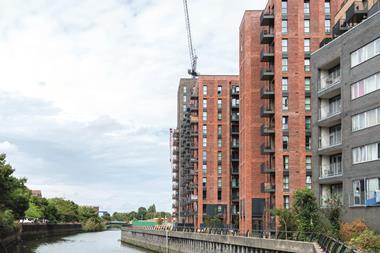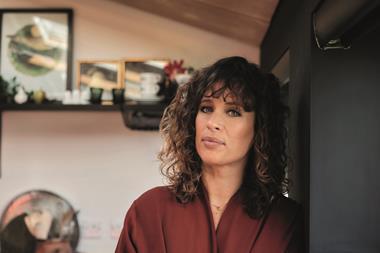An employee returns to the office, after months in isolation; within a week, they contract Covid-19. They report their illness to their employer, who in turn complains to the landlord. The employee is convinced they contracted the virus in the lobby area of the building.

Despite the landlord’s best efforts to implement social distancing in common areas, the tiny lobby is always packed with people – some trying to sign in at the reception desk, some queuing for the lifts.
The employee drives to the office every day and only a fraction of their team has returned to the workplace, which makes maintaining social distancing relatively easy. They assume they must have caught the virus in the lobby area.
If the employee’s instincts are correct, how liable is the landlord? Are landlords currently doing enough to mitigate the risk of the virus spreading within their buildings and if not, what measures should they and employers take to ensure people can safely return to the workplace?
The need to ensure the health and safety of those entering a building is nothing new. “The key message in terms of the reopening of offices is that in terms of health and safety for landlords, nothing will have changed – their legal duties remain the same,” explains Emma Windle, regulatory lawyer at Irwin Mitchell.
The key difference now is that landlords must assess the risk of a new danger: Covid-19. And this is no small feat. “They’re having to consider things in a completely different way,” says Windle. “Previously, a door handle wouldn’t be considered a hazard area, but now it could be, and measures will need to be put in place to eliminate or mitigate the risk.”
Risk assessment
Windle adds that before the pandemic, a risk assessment undertaken by a retail business might have stretched to two or three pages. “Now, we’re looking at 19 to 20 pages for a full Covid-19 risk assessment,” she says.
Landlords also need to update these risk assessments continuously when new government guidance is introduced. “I think the safest way to do it is to take regular legal advice if you’re unsure about changes that you’re looking to implement, to ensure compliance with the guidance,” says Lisa Gilligan, partner at Freeths.
Take regular legal advice to ensure compliance with the guidance
Lisa Gilligan, Freeths
The list of things that landlords need to take into consideration is lengthy. How many people can the building’s lifts safely accommodate; how do people enter and exit the building; does the cleaning regimen need to be stepped up; and what about air conditioning and ventilation?
Kizzy Augustin, partner at Russell-Cooke, says natural ventilation – opening windows or using fans, for instance – could be preferable to using an air conditioning machine to push air around, which may not be ideal for airborne diseases unless there is 100% recirculation.
She adds that the general guideline for undertaking risk assessments is that “as long as there is an attempt to try and mitigate risk with appropriate control measures, you are unlikely to be criticised for it”.
Serious consequences
However, David Hills, senior director at Ark Workplace Risk, is concerned that not enough is being done by some landlords to secure the health and safety of those employees who are returning to work.
“At Ark, we are seeing far too many common areas where nothing has been done – no review, no formal assessment, no signage, not even a hand sanitiser in sight – to protect returning occupiers, which puts them at risk of the disease and the owner at risk of litigation,” he says.
The consequences of not carrying out a thorough risk assessment and complying with health and safety obligations can be serious. There are potentially criminal and civil implications.

“A personal injury claim in respect of Covid-19 will only succeed if the claimant establishes three criteria,” explains Matthew Kyle, health and safety lawyer at Osborne Clarke. First, the landlord owed a duty of care; second, there was a breach of that duty; and third, the breach caused damage or loss as a result.
“It is the third criterion, causation, which is likely to be the most problematic,” explains Kyle.
It may prove difficult for an employee to prove they definitely contracted Covid-19 in a communal area at work.
“Given the nature of the virus, a claimant will find it difficult, if not impossible, to prove the infection resulted from the communal area of a property rather than the many other sources of infection, such as public transport, workplaces and contact with friends and families,” says Kyle.
The bigger danger to landlords that fail to prepare properly for workers returning to the office is if the Health and Safety Executive discovers that a risk assessment has not been carried out or implemented properly, it could be deemed a criminal offence. This could result in fines and potentially even imprisonment.
Duty of care
If a company owns the building it occupies, it is bound by additional duties of care. “The landlord will owe direct duties to its tenant under its lease, for example in relation to the cleanliness and condition of common parts,” says Chris Stevenson, partner at Linklaters. “That same landlord may also owe a broader duty of care to all people using the premises to ensure that the premises are a safe and Covid-secure environment.”
In order to make buildings Covid-secure, the landlord may need to show flexibility around the lease terms. Jill Carey, director in the real estate disputes team at Freeths, cites the example of an occupier that may need to change partitions to adhere to health and safety guidelines, but where such action might be restricted by leases.
“Landlords might need to be quicker and more flexible on alterations,” says Carey. “There needs to be a degree of cooperation and it is basically not optional, in my view, for the sensible landlord not to try and get those conversations going.”
The landlord will owe direct duties to its tenant under its lease
Chris Stevenson, Linklaters
The issue is further complicated by the potential cost of these additional health and safety measures, which the landlord may want to recover under the service charge, and that may be disputed by the tenants.
“Agree it with the tenants first, if possible, to avoid a dispute,” says Carey. Likewise, a coordinated deep-cleaning plan for the whole building could be more beneficial than tenants cleaning their own space, if it can be agreed with tenants.
Establishing strong lines of communication between landlords and tenants is the best option for all parties.
“The key to avoid disputes will be taking early legal advice, cooperation, communication and everybody on both sides of things trying to be more flexible,” says Carey.
“Without that cooperation, risk, in terms of liability for both parties, is going to be increased,” adds Gilligan.
At the moment, landlords and employers have got enough on their plates, so ensuring the workplace is as safe as possible is a win-win all round.






























No comments yet